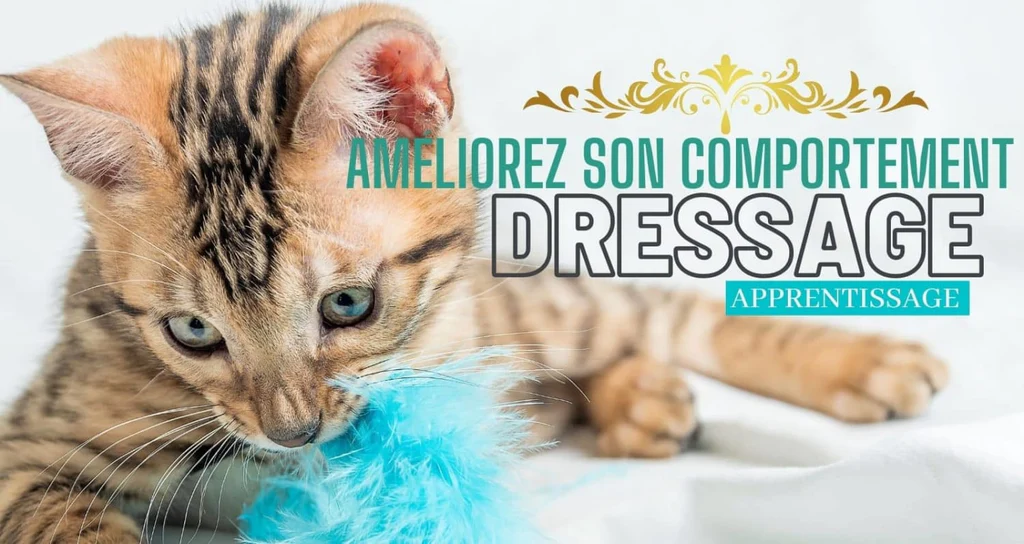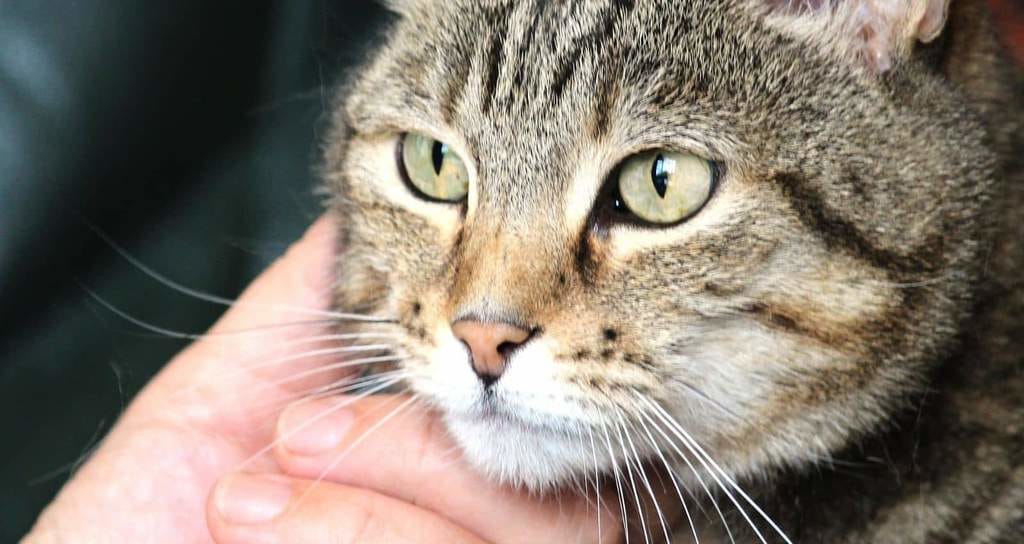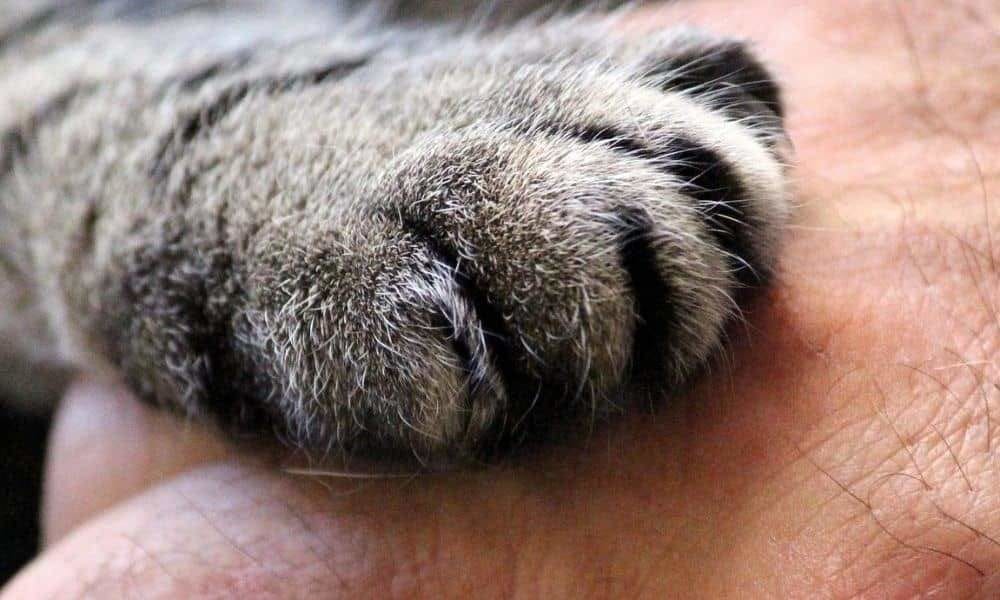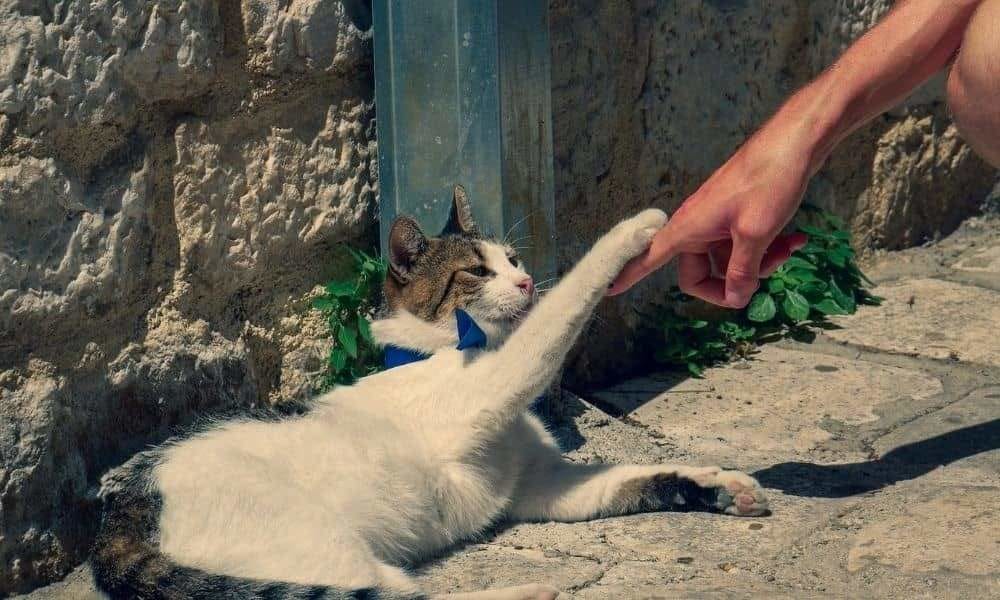How to train your cat to play and improve its behavior

Introduction to cat training: possibilities and usefulness
Contrary to popular belief, cats are just as fun to train as dogs! Cat training is a great way to bond with your cat and teach them the meaning of a few key words.

As a pet fanatic, I dare say that cats are just as fun to train as dogs. Your cat will be happy to learn basic directions, and most kittens take to leash training well if you pair the lessons with food and fun.
Many cats love training if done correctly , with patience and rewards, and like any other relationship, you get what you put in!

Although cats cannot be trained to perform the range of tasks that dogs are bred to do, basic training comes naturally to them. Cats instinctively use a litter box, and common dog behavior problems, like play biting, separation anxiety, and aggression, are easy to avoid.

Often, to teach a cat not to do something, such as not to bite or pull on a leash, you simply need to not provoke the behavior in the first place.
If you leash train your cat , opt for a harness rather than a training collar, which can lead to a frenzied opposition reflex and risks choking your cat. If your cat bites, teach it what to do instead by redirecting its predatory instincts toward a feather toy.
The benefits of cat training are vast. Training provides mental and physical stimulation as well as positive social contact.
The simple act of training a cat itself is incredibly valuable for frustrated, bored, shy and fearful cats, and you will not only be able to correct certain behaviors (e.g. biting) , encourage others (e.g. toilet training). a litter box or even the toilet), and create playful behaviors for your cat. So much happiness!

Before you start training your cat, walk in his paws for a minute. Unlike dogs who behave like young children with their foster families, cats are more like adolescents. While dogs cooperate in exchange for a few kind words, cats are motivated based on the principle of self-interest.
Cats are indeed animals that must be seduced and not commanded. Disdainful of our excitement, cats will only participate in training games if the rewards are (really) worth it.
x fun and useful things you can teach your cat

Cat training is a great way to bond with your cat and teach them the meaning of a few key words. The important thing is to let your cat have the final say on what you teach him. Not all cats like to do all the things. Also, choose behaviors that already come naturally to your cat before you start implementing this behavior.
Whatever happens, stay positive. Clicker training is a very effective way to spot when your cat is doing the behavior you have been focusing on.
Training, in a nutshell, is simply assigning words to natural behaviors and rewarding your cat for cooperation.
Here are x words and actions to teach your cat:

1. Teach him gentleness
Encourage your cat to view hands as always rewarding. To discourage biting, dab your knuckles or the back of your hand with a little homemade or store-bought candy paste. Say "gentle" when your cat or kitten licks your hand , and calmly remove your hand if it starts to bite you.

2. Teach him to look for something
Throw treats or a toy at your cat's feet, and once your cat can follow the toss and find the reward in question, add the word "seek." Yes, it's that simple. You can then play the shell game with Tupperware containers or even with your hands. Say "gently" if he scratches or bites your hand, using a dollop of cat paste to encourage him to lick. Reveal the treat after he licks or gently taps your hand with his paw.

3. Teach him to follow the tip of a chopstick
You can use a commercially purchased wand (often found in decorative items or pet stores), or even the tip of your finger. Teach your cat to pay attention to the tip of the wand by presenting it 5 cm in front of its nose. As soon as he touches it, click and reward him. Once your cat reliably moves toward the target, say the word "target" to highlight this behavior.
4. Teaching him to sit
Every time your cat sits naturally, click and give him a reward. Soon you will notice that your cat sits up to give you a signal when you take out the treats. Add the word "sit" once you can predict its behavior. Then try to coax him into position with your wand or a wave of your hand. Click and reward this pose. Gradually remove the click with each correct answer , using the clicker and treats intermittently.

5. Teach him to lie on his mat
Create a cat mat by laying a flat mat, towel or napkin on the counter, sofa or table. Curiosity may not kill your cat, but it will get the better of him! When he steps on the cat mat, click. Then toss a treat slightly away from the mat, so your cat has to come back for the next round.
Gradually introduce the use of the cue “on your mat” . Once your cat moves to her mat willingly and stays there, introduce the “stay” cue . Use the cat mat to encourage your cat to stay in an area such as their cat tree while you eat or cook. You can also bring your cat mat on vacation or to the veterinarian to reassure your cat during check-ups.

6. Teach him to come to you
Cats can learn to come as soon as they enter your home. Associate positive experiences and the stirring of a cup of treats with the word “come.”
To do this, put treats in a cup or container and shake and reward until your cat recognizes the sound. Click and reward your cat when it arrives. Slowly increase the time between saying "come" and shaking the treats until he comes on command. Gradually remove the clicker and reward him intermittently.

7. Teach him to get into his carrier
Most cats will happily jump into a box or explore a bag. Having a specific command for this behavior is helpful when it comes time to take the cat out of the carrier. In fact, take out the cat carrier well before you need it, hiding treats in it and even giving your cat or kitten portions of their meal.
When your cat jumps into the carrier or box, click and reward this behavior. When your cat asks you, add the clue "in the box" . Gradually add carrying him in his box/basket, rewarding him after each trip.

8. Teach him to high-five you
If you want to learn how to give your cat what our Anglo-Saxon friends call a “high-five”, here is how to do it, step by step:
Step 1
Grab a handful of treats that your cat likes. First, hold a treat in a closed hand and keep it close to the ground. When your cat touches your hand with its paw, say "yes" and reward it with the treat.
Be patient as it may take some time for your cat to learn that it can use its paws to touch your hand.

2nd step
Repeat the first step and slowly increase the height of your hand until he raises his paw to touch your hand every time you offer it to him.
Step #3
The next step is to present your hand open, without a treat. When your cat touches your flat hand with its paw, say "yes" and reward.

Step #4
Present your hand, this time with the palm facing outwards. Say “yes” and reward when he touches your hand.
Step #5
Slowly increase the height of your hand until it is above your cat's head to complete the high five. Once again, say “yes” and reward when he touches your hand with his paw.

Step #6
Repeat step five until your cat consistently gives a high five when you offer your hand.
Step #7
Once your cat has learned this, you can say “high five” or “high five” when he touches your hand with his paw. It is important to say the signal at the time of contact, so that he learns to associate it with the action. You can then say "yes" and reward as usual.
Step #8
Repeat step 7 until you can say "high five" and your cat consistently high fives you.

Little tips to foil your cat's tricks
It's often the case that humans try to learn cat tricks and give up because their kitty seems to lack the attention span. In other words, the same cat that meows at them for 30 minutes straight can't seem to concentrate for 5 minutes to learn a new trick.
If this seems strange to you, that's normal. What your cat has is not a lack of attention span, it's more a case of a cat manipulating you. He wants the food, but he wants you to be the one entertaining him - like running after him and trying to put the treat in his face while he runs away from you across the room.

What should you do ? Well, if he is hungry, you need to make him understand that the food is moving further away rather than closer, when he starts to look bored.
When your cat starts to walk away or stare blankly at you from several feet away, you can go the other way or leave the room. If the cat follows you, it is still hungry or motivated to learn. If it doesn't, that means you need to take a break and try later today.
Many cats also appear bored when they can't figure out what you want or don't want the treat you have to offer. You can try using something tastier and see how they react. If they suddenly seem more attentive, then food value was the key. The other big factor is your technique.

Are you delivering the treat quickly enough when your cat does the right thing? If you're using a treat as bait, do you place it close enough to his face to get his attention and move it so that his weight is pushed to his rear?
You may have to give him several treats just to get his weight to shift back a little at first. Either way, don't give up. Remember, if a tiger or lion learns a cat trick, your house cat surely can too!
Cat Training Summary
Lessons often require intense concentration, so keep them short and upbeat. End each one with a moment of “predatory” fun using a feather or stuffed toy, letting your cat take it away as a sign of victory.

Don'ts of Cat Training:
Cats, unlike dogs, do not react to discipline and do not learn anything from it. This is how. Techniques such as spraying your cat with water, scolding, or scaring your cat with noise to prevent your cat from engaging in a certain behavior may eventually work, but they will not stop the cat's behavior. cat in general - for example if he scratches the sofa in your absence. Your presence alone will create anxiety, making the cat suspicious, uncomfortable in your presence, or even aggressive.
In summary, the behaviors we observe, especially those we don't like, are actually the natural way cats communicate.
Any punitive method or method designed to reduce a cat's natural behavior only cuts off communication. Instead, focus training on what you want, rather than what you don't want! Let us know if it worked in the comments!




